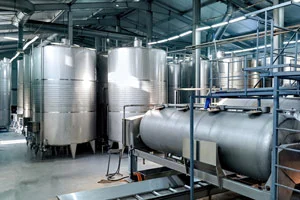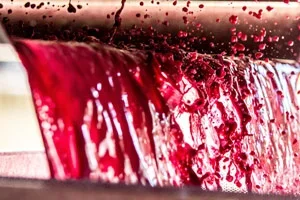Microbiological control is an essential safety requirement in the food industry in general, but especially in the wine industry. Knowing how to properly conduct this process in specific cases, such as wines with little or no sulfur, allows us to check for the presence of microorganisms with absolute certainty.
What is microbial contamination in wines?
Microbial contamination is caused by microorganisms that can negatively affect the quality of wine. We have to remember that the must is naturally rich in sugars and nutrients, thus facilitating the development of yeasts, bacteria and molds. Even after fermentation occurs, some of these organisms may still be active. Therefore, microbiological analyses are essential to control them.
Among the agents that cause microbial contamination, we highlight:
- Oxidative yeasts, which can metabolize sugars and organic acids when oxygen is present. As a result of this process, by-products emerge and affect wine flavor and odor, including acetic acid, ethyl acetate and acetaldehyde.
- Apiculate yeasts, predominant in the must before fermentation, growing rapidly even at low temperatures. They produce more volatile acidity and ethyl acetate.
- Fermentative yeasts, responsible for the alcoholic fermentation until the sugars are fully consumed. In general, they are positive, but some strains can produce substances detrimental to wine quality, such as excess acetic acid, sulfur compounds and urea.
- Acetic bacteria, such as Acetobacter and Gluconobacter, which require oxygen to be active and metabolize acetic acid.
- Lactic acid bacteria, which are mostly heterofermentative and can end up producing an excessive volatile acidity. They are abundant in musts from damaged grapes, but may also appear later during fermentation, producing unpleasant odors.
- Brettanomyces yeasts, which contaminate the barrels and concrete tanks, and even the bottle. They are not easy to detect, but it is important to prevent their development because they have a strong unpleasant odor.
A complete microbiological control is essential to detect the presence of these microorganisms, which can seriously alter the quality of the wine and, consequently, cause significant economic losses.
Recommended reading: Brettanomyces bruxellensis, prevention or cure?
How to carry out a microbiological control on wines with little or no sulfur?
The microbiological analyses performed on any wine to detect the possible presence of yeasts or bacteria have 5 different phases:
- Raw material control
- Grape processing control
- Alcoholic fermentation control
- Malolactic fermentation control
- Aging phase control
Wines with little or no sulfur are intended for consumers seeking increasingly healthier products without exogenous chemical compounds. Besides, the absence of sulfites helps preserve the wine’s aromas and make them even more intense. No doubt this is positive on the palate, but we cannot forget that sulfur dioxide is still the most widely used preservative in wine because of its microbiological and antioxidant efficiency.
We can search for alternatives to sulfur for wine making, but this requires meticulous care in production, starting with the grapes in the vineyard up to the moment of bottling. This implies exhaustive microbiological control at all the stages mentioned above, to early detect any problem that could end up damaging the wine.
It is also necessary to consider using alternative products to sulfur because of their antioxidant capacity, such as inactivated yeasts with high glutathione content. For example, our product SuperBouquet Evolution.
Agrovin’s proposals for proper microbiological control
In Agrovin’s product catalog, we can find several products designed to carry out an adequate microbiological control of wine. Among them, we highlight:
- Microstab PH is designed to achieve chemical and microbiological stabilization of musts prior to alcoholic fermentation. Thus, avoiding the development of populations that can grow during fermentation and affect the finished wine.
- Microstab Protect combines the antimicrobial properties of fungal chitosan with the antioxidant protection of glutathione. It is proposed as an effective alternative to sulfur in both microorganism control and antioxidant protection. Helps removing Brettanomyces yeasts.
Likewise, at Agrovin we have a laboratory accredited by ENAC as a testing laboratory where we offer our customers the possibility of performing different tests such as microbiological controls, oenological analysis, fermentation controls and many others. If you are interested in any of these services, contact us:









